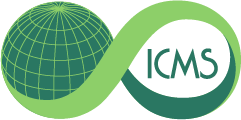About:
Speaker: Martin Kemp (he/him), University of Oxford
About the talk:
No-one - not even Galileo - was more insistent than Leonardo da Vinci in proclaiming the rule of mathematics in every aspect of nature. He introduced mathematics into areas of practice in which maths had previously been absent. This includes engineering and the science of the human body as a divine machine. We will see how Leonardo aspired to create a mathematical and experimental basis for anatomy in a way that was very different from Renaissance medicine. Indeed, his anatomical studies really do not belong in contemporary medical practice at all. His anatomical researches are best characterised as a philosophical science.
His first major set of anatomical studies involve the representation and sectioning of a human skull in 1489. They show him to not only to be a supremely naturalistic draughtsman but also demonstrate his quest to probe the secrets of the skull in relation to the geometrical locations of key mental functions.
In this talk, we looked at Leonardo’s science of seeing in his anatomy and in his science of optics. Later in his work as an anatomist he undertook details studies of the brain and reformulated earlier rules on optics in such a way that seeing became a more complicated quest, involving mathematical uncertainty. Not least, we saw how his optics is related to his paintings.
Around 1510, he undertook sustained explorations of the mechanics of the skeleton and muscles, looking at the law of levers as applicable to human motion across space, which he referred to as a quantità continua. This was demonstrated through animations of Leonardo’s drawings.
When he turned his attention to the heart, he brought his researches on the mathematics of vortices into his understanding of the action of the heart, in particular the valves. We explored his intention to make a model of the neck of an aorta to confirm his analyses of the flow of blood from the heart and through the valve. We finished with an animation of turbulent motion in water and blood.
About the speaker:
Martin Kemp was trained in Natural Sciences and Art History at Cambridge University and the Courtauld Institute, London. His books include, The Science of Art: Optical Themes in Western Art from Brunelleschi to Seurat (Yale), and The Human Animal in Western Art and Science (Chicago). He has published and broadcast extensively on Leonardo da Vinci, including the prize-winning Leonardo da Vinci: The marvellous works of nature and man, and Leonardo (both Oxford). His Christ to Coke: How image becomes icon (Oxford) looks at 11 representatives of types of icons across a wide range of public imagery. He wrote regularly for Nature, his essays for which have been published as Visualizations and developed in Seen and Unseen (both Oxford) in which his concept of “structural intuitions” is explored. More recently he has published Art in History (Profile Books) and Structural Intuitions: Seeing Shapes in Art and Science (Virginia). New books are Heavenly Visions: Dante and the Art of Divine Light, and Hockney’s Eye, a volume of essays for the 2022 exhibition in Cambridge
He has been a Trustee of the National Galleries of Scotland, The Victoria and Albert Museum and British Museum. He has curated and co-curated a series of exhibitions on Leonardo and other themes, including Spectacular Bodies at the Hayward Gallery in London, Leonardo da Vinci: Experience, Experiment, Design at the Victoria and Albert Museum in 2006 and Seduced: Sex and Art from Antiquity to Now, Barbican Art Gallery London, 2007. He is now full-time speaking, writing and broadcasting.
Sign up for our Public Events newsletter to receive information about our events direct to your inbox!
